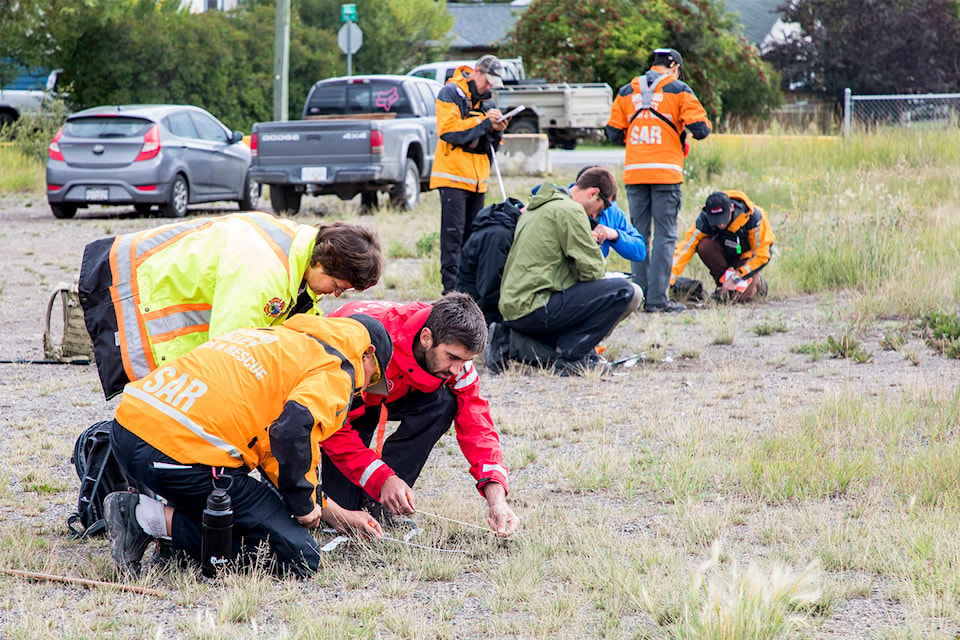When news came that there was a 4-year old missing in Mackenzie, many Search and rescue teams from across northern B.C. were called to assist in the search. Late Sunday on Aug. 18, George was found by search efforts that saw hundreds of people from the community aid search and rescue teams.
READ MORE: UPDATE: Search crews find 4-year-old boy who went missing near Mackenzie
Imagine if you were a SAR volunteer and were called on-scene to look for a 4-year old boy.
Such searches may cause stress to SAR volunteers said Chris Mushumanski, search manager with Nechako Valley Search and Rescue. And to mitigate and deal with that stress, Nechako Valley search and rescue activated their Critical Incident Stress Program (CISM).
CISM is activated when members conduct searches that could have an emotional impact on their pscyhe. Once CISM is activated, team members get together and speak about their experiences, but also actively look out for each other. Partners of NVSAR members are also notified and asked to observe their emotional well-being.
Wes Smith, a Nechako Valley SAR member was called to help in the search for George. He has a 4-year old of his own and said there was an immediate emotional connection he felt with George’s family.
“I think the shock of it all and the connection to my 4-year old were dealt by my team members. They said right off the bat, that I could step away and not be involved. And to know that, was comforting,” he said.
CISM program is really helpful in mitigating stress, he said.
“I am really glad we have it because it takes that internal piece which could be stress and that you may easily dismiss, and brings its outside. I know what to watch for now physically and mentally. And with family members and spouses being involved, they are told what to watch for, which helps a lot as family members usually can see if something is not right before you realize it,” Smith added.
Mushumanski said an important aspect of being a SAR volunteer is that they have the right to refuse taking a task that could affect them adversely.
Smith said that once he was in Mackenzie all the thoughts he had about his four-year old faded away and he focused on the task at hand.
“How can I help and what is my job here right now was what I was thinking. So that moved to the forefront,” he said.
Nechako Valley SAR members looked for George from 6 am until 6 pm on Aug. 18 but had not found the boy. Smith said as a team they decided to leave the scene as there was another SAR group who were scheduled to look for George from that time on wards. The four-year old was found shortly after.
Another SAR volunteer on the scene Eric Wallace said, “We got the news when we were on our way back and suddenly I felt the stress leave my body. My stomach was feeling a little uneasy as I was having a physical reaction to the stress. But as soon as we heard he was found, I was much more at ease.”
Wallace found the CISM program to be helpful as well. He said the fact that you can speak about the day and decompress with your team members, really helps with stressful searches.
Meanwhile, another search that involved a snowmobile accident a few years ago had SAR members activate the CISM program.
Smith said the incident involved one injured person and a deceased person.
“That was new to me. That was stressful in a different way than searching for a 4-year old. One had a bit more intensity and immediacy to it. Whereas the other was more of an internal stress of whether I can handle it, as I had never dealt with that situation before,” he said.
SAR volunteers provide a lot of support in search activities. The CISM program has been built to aid these volunteers to be able to recognize emotional stressors, Smith said.
Mushumanski said the CISM program is a way for the team to manage each other and understand what they can do to help one another return to normalcy.
Aman Parhar
Editor, Vanderhoof Omineca Express
aman.parhar@ominecaexpress.com
Like us on Facebook and follow us on Twitter
